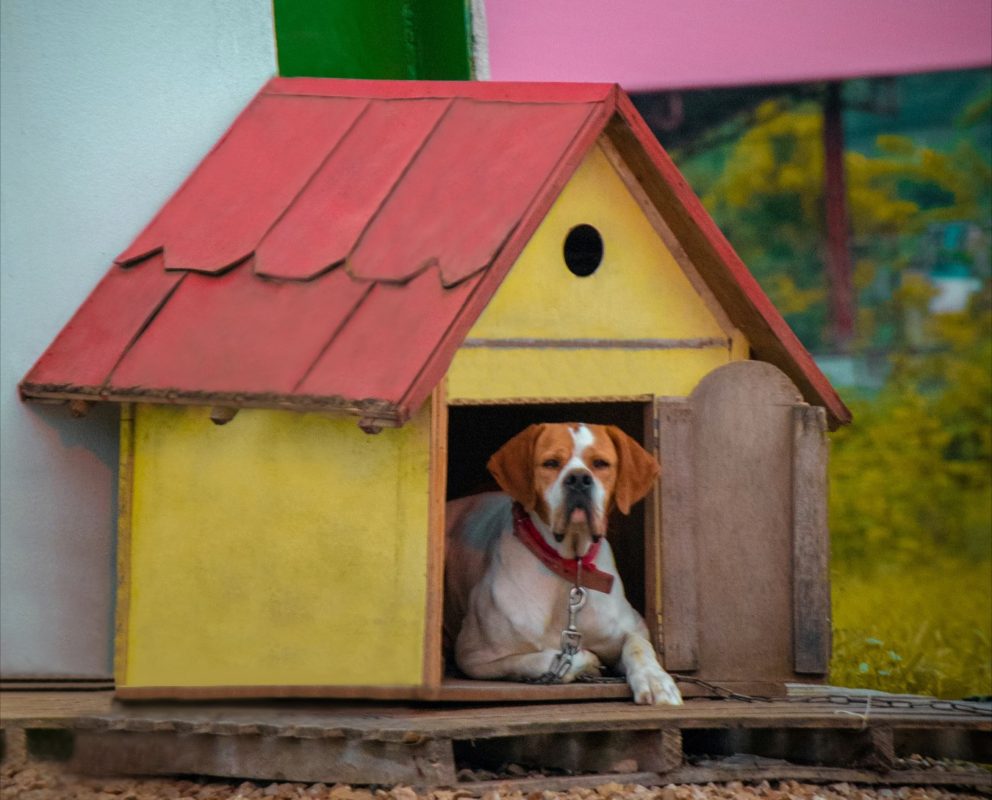Everything, Dogs, Pet Care
The Ideal Dog House
It may be a structure that you designed and built yourself. Or perhaps you bought a dog house kit to build it, or you bought it pre-made.
No matter how the dog house was built, your dog will be happy if it’s comfortable for him in all kinds of weather, at whatever time of day or night he may be using it.
So what qualities does the ideal dog house have?
The size of the dog house
When calculating dimension for a dog house, be sure to take into consideration any growing that your dog has left to do. Also note that dimension given here are minimum dimension to give your dog space to enter, exit, move around, and lie down comfortably. More space provides more comfort. But if the dog house is intended to provide warmth for your dog, don’t make it too big — it will take longer to warm up when the dog is in it.
Dog house floor space needs to accommodate the length of the dog from his nose to the base of his tail. If the dog is 25 inches long, for example, the length and width of the dog house should each be at least 25 inches.
The height inside the dog house should be at least a couple of inches more than the distance from the ground to the top of the dog’s head. A dog that measures 19 inches high at the top of his head should have a dog house with an inside height of at least 21 inches.
The dog house doorway needs to be at least a couple of inches higher than the distance from the top of the dog’s shoulder to the bottom of his chest. A bigger doorway makes it easier for older dogs in particular to get in and out of the dog house.
For households with more than one dog, you can buy or build a dog house to accommodate more than one dog at a time. If the dogs don’t like sharing their sleeping quarters, however, they should have separate dog houses.
The dog house structure
The roof and walls should be free of leaks and drafts. A flap door keeps drafts from coming through the doorway and keeps the dog’s body warmth inside to warm up the dog house. In colder climates, insulated walls add to your dog’s comfort in winter months.
The bigger the doorway is, the more valuable a flap door is. Some more elaborate dog houses have a hallway, which helps protect the interior from the outside air.
A hinged top makes it easy to remove the roof to clean the dog house.
The dog house location
In climates with hot summers and cold winters, you might want to move the dog house depending on the season.In hot months, the dog house is ideally in a shaded location. In cold months, on the other hand, the sun can help warm the dog house.
Position the dog house so that the doorway is protected from the wind, perhaps facing the house, another building, or a solid fence. A draft is unpleasant in any season.
The dog house floor and bedding
A raised floor helps protect the dog from the cold earth and keeps rain and snow from seeping in. It also makes it easier for larger dogs to get in and out of the dog house. For bedding, a thick bed of straw, hay, wood shavings, carpeting, or blankets provides comfort and insulation. Foam padding can be used with or without other bedding.
More dog house options
Depending on your budget and your climate, you may want to consider these options:- A heated pet mat
- A dog house heater
- A dog house air conditioner
Avoid heat lamps, which can cause fires.
Acclimatizing your dog to a dog house
When the weather gets colder, dogs that sleep outdoors grow thicker coats to keep them warmer — if they spend a lot of time outdoors. If your dog usually sleeps indoors, an unheated dog house is not going to keep him warm on a December night. Dogs that sleep outdoors need to become acclimatized to the colder temperatures beginning from when the weather starts to become cooler.
Some breeds of dogs will not grow a coat that’s thick enough to keep them warm during the winter. Dogs that don’t have thick coats shouldn’t be left outdoors on cold nights. But a dog house may provide a comfortable retreat for them when they’re in the yard during the day.

